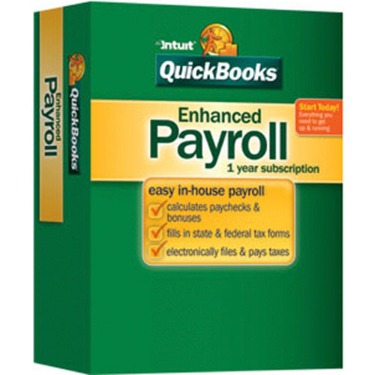Content
- EFRAG publishes draft endorsement advices on disclosure of accounting policies and definition of accounting estimates
- Explain how changes of accounting estimates that significantly affect income should be reported….
- Accounting Changes and Error Corrections—a replacement of APB Opinion No. 20 and FASB Statement No. 3
- IAS plus
- Diversity, Equity and Inclusion Transparency Report

The addition of a definition of accounting estimates plugs a gap and along with further clarifications could help reduce the diversity in practice. The policies comprise separate rules on how to disclose information to investors and companies should comply with adequate disclosure requirements.

Goodwill is an intangible asset recorded when one company acquires another. It concerns brand reputation, intellectual property, and customer loyalty.
EFRAG publishes draft endorsement advices on disclosure of accounting policies and definition of accounting estimates
In the preparation of https://personal-accounting.org/ statements, once an accounting principle is adopted, it shall be used consistently in accounting for similar events and transactions. Financial statements for each individual prior period presented shall be adjusted to reflect the period-specific effects of applying the new accounting principle. Financial statements of a new reporting entity as if it had existed in those prior years. So we know that the Year 1 inventory balance is $75 lower on a FIFO basis, but how is this reflected in the financial statements? They would not go back to Year 1 and adjust the numbers, however, they would need to book an adjustment to the Year 2 retained earnings opening balance. Since inventory decreased $75, the company would record a debit to retained earnings for $75 and a credit to inventory for $75. Are there business processes that do not affect accounting records or financial statements?
- Instead, they will report any necessary adjustment as an adjustment to the opening balance of retained earnings for the earliest period presented.
- Additionally, the Board discussed the proposed note disclosure requirements for changes in accounting estimates.
- Regarding the circumstances that constitute a change to or within the financial reporting entity, the Board tentatively decided to carry forward the circumstances described in paragraphs 9b–9d of the Exposure Draft as changes to or within the financial reporting entity.
- Conversely, a change made to the same allowance to incorporate updated economic data (e.g., unemployment figures) and the impact it could have on the customer population would represent a change in estimate.
In some circumstances, changes in estimate may impact both assets and liabilities, or relate to a net assets/equity item rather than impacting surplus or deficit. In such circumstances, the change is recognized by adjusting the carrying amount of the related assets and liabilities or the item of net assets/equity in the period of the change.
Explain how changes of accounting estimates that significantly affect income should be reported….
Disclosures also typically include other details about the cause of the error, how it was discovered and other direct and indirect impacts of the error. SEC registrants will also need to consider the impact of and/or disclosure of the error corrections within other sections of their filings (e.g., Selected Financial Data, Management’s Discussion and Analysis , Contractual Obligations, etc.). Voluntarily changes from one acceptable accounting principle to another on the basis that it is preferable. It should comply with all definition types, recognition criteria, measurement concepts applied specifically for the income, expenses, assets, and liabilities. Lizzette began her career at Ernst & Young, where she audited a diverse set of companies, primarily in consumer products and media and entertainment.
What are examples of accounting estimates?
Examples of accounting estimates include net realizable values of inventory and accounts receivable, property and casualty insurance loss reserves, revenues from contracts accounted for by the percentage-of-completion method, and pension and warranty expenses.
While each Accounting Principle vs. Accounting Estimate reporting framework aims to provide uniform procedures and principles to accountants, there are notable differences between them. Norwalk, CT, June 1, 2005—The Financial Accounting Standards Board has issued Statement No. 154, Accounting Changes and Error Corrections, a replacement of APB Opinion No. 20 and FASB Statement No. 3. The Statement applies to all voluntary changes in accounting principle, and changes the requirements for accounting for and reporting of a change in accounting principle.
Accounting Changes and Error Corrections—a replacement of APB Opinion No. 20 and FASB Statement No. 3
Under the provisions of Opinion 20, most accounting changes were recognized by including in net income of the period of the change the cumulative effect of changing to the newly adopted accounting principle. This Statement improves financial reporting because its requirement to report voluntary changes in accounting principles via retrospective application, unless impracticable, enhances the consistency of financial information between periods. That improved consistency enhances the usefulness of the financial information, especially by facilitating analysis and understanding of comparative accounting data. This Statement carries forward without change the guidance contained in Opinion 20 for reporting the correction of an error in previously issued financial statements and a change in accounting estimate. This Statement also carries forward the guidance in Opinion 20 requiring justification of a change in accounting principle on the basis of preferability. When there is a change in estimate, account for it in the period of change. If the change affects future periods, then the change will likely have an accounting impact in those periods, as well.
VERISIGN INC/CA MANAGEMENT’S DISCUSSION AND ANALYSIS OF FINANCIAL CONDITION AND RESULTS OF OPERATIONS FORWARD-LOOKING STATEMENTS (form 10-K) – Marketscreener.com
VERISIGN INC/CA MANAGEMENT’S DISCUSSION AND ANALYSIS OF FINANCIAL CONDITION AND RESULTS OF OPERATIONS FORWARD-LOOKING STATEMENTS (form 10-K).
Posted: Fri, 17 Feb 2023 21:08:12 GMT [source]
Financial statements of subsequent periods need not repeat these disclosures. ‘uncertainty that arises when monetary amounts in financial reports cannot be observed directly and must instead be estimated’.
Ready To Make a Change?
A change in the reporting entity is considered a special type of change in accounting principle that produces financial statements that are effectively those of a different reporting entity. Correcting the prior period financial statements through a Little R restatement is referred to as an “adjustment” or “revision” of prior period financial statements. As previously reported financial information has changed, we believe clear and transparent disclosure about the nature and impact on the financial statements should be included within the financial statement footnotes. As the effect of the error corrections on the prior periods is by definition, immaterial, column headings are not required to be labeled.

Financial statements of subsequent periods are not required to repeat these disclosures. If the change in accounting principle does not have a material effect in the period of change, but is expected to in future periods, any financial statements that include the period of change should disclose the nature of and reasons for the change in accounting principle. How should the effect of a change in accounting estimate be accounted for?
The size or nature of the item, or a combination of both, could be the determining factor. The revised estimate should subsequently be reviewedby an independent reviewer, i.e. senior accountant. The UN has not recognized any depreciation on the asset because it is not yet in use.
- Several thousand dollars may not be material to an entity such as General Motors, but that same figure is quite material to a small, family‐owned business.
- SEC registrants will also need to consider the impact of and/or disclosure of the error corrections within other sections of their filings (e.g., Selected Financial Data, Management’s Discussion and Analysis , Contractual Obligations, etc.).
- They would not go back to Year 1 and adjust the numbers, however, they would need to book an adjustment to the Year 2 retained earnings opening balance.
- Principle changes are done retroactively, where financial statements have to be restated, while estimate changes are not applied retroactively.
- Big R restatements require the entity to restate previously issued prior period financial statements.